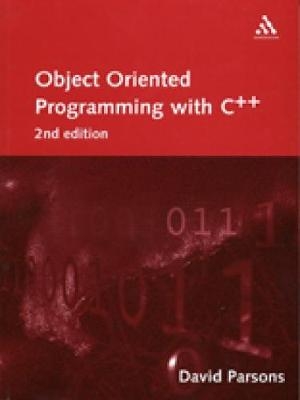
Object-Oriented Programming with C++
Cengage Learning EMEA (Verlag)
978-0-8264-5428-7 (ISBN)
- Titel z.Zt. nicht lieferbar
- Versandkostenfrei
- Auch auf Rechnung
- Artikel merken
Now that the various aspects of object technology are firmly established in the mainstream of computing, the principles and practices of object-orientation have become increasingly important to students on university and college computing courses. Object-oriented languages such as C++ and Java have found wide popularity in the workplace, and new methodologies such as the Unified Modeling Language (UML) have been developed to encompass object-oriented design and analysis. As higher education courses adapt to the changing technology, more and more students are finding the need for a simple introductory text covering object-oriented concepts, programming, analysis and design. This book satisfies that need. It is assumed that the reader has a practical knowledge of the basic principles of computer programming, though not necessarily in any particular language. The book demystifies the rather forbidding terminology used in object-oriention, and presents each aspect in a simple form, using C++ as the example language. The guiding principle is that concepts can only be learned through practical 'hands on' experience.
David Parsons has lectured in both further and higher education, and is currently teaching and researching at the Institute of Information and Mathematical Sciences, Massey University, Auckland, New Zealand.
Preface
1. What is object-orientation?
2. What is C++?
3. Getting to grips with C++
Part 1 Data types, operators, functions and I/O
Part 2 Arrays, strings, pointers and control structures
4. Modelling the real world
5. Classes and objects
6. Object lifetimes and dynamic objects
7. The metaclass
8. Inheritance and classification hierarchies
9. Associations and aggregations
An example program
10. Introduction to polymorphism
11. Operator overloading
12. Polymorphism by parameter
13. Method polymorphism
14. Run-time polymorphism
15. Container classes
Part 1 Container types, data structures and simple containers
Part 2 Heterogenous containers and template classes
16. Multiple inheritance
17. Persistent objects, streams and files
18. Object-oriented analysis and design
Case-study: a UML design
Appendix: answers to exercises
Glossary
Bibliography
Index
| Erscheint lt. Verlag | 8.11.2000 |
|---|---|
| Verlagsort | London |
| Sprache | englisch |
| Maße | 175 x 241 mm |
| Gewicht | 704 g |
| Themenwelt | Informatik ► Software Entwicklung ► Objektorientierung |
| ISBN-10 | 0-8264-5428-3 / 0826454283 |
| ISBN-13 | 978-0-8264-5428-7 / 9780826454287 |
| Zustand | Neuware |
| Haben Sie eine Frage zum Produkt? |
aus dem Bereich


